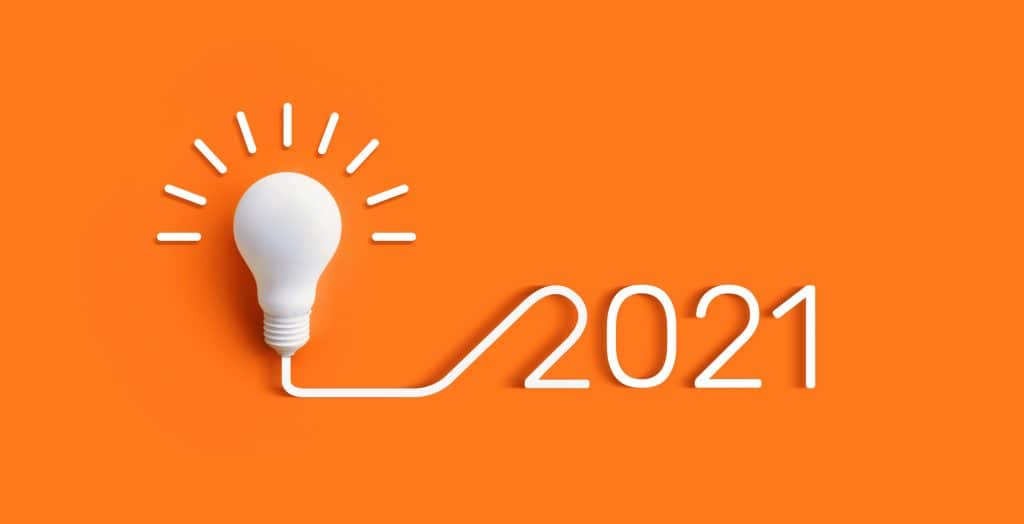As we enter Q4 of 2020, we start thinking about what the coming year will bring for the electronics industry. This year-end marks a psychological close. 2020 was a year of unprecedented lockdowns and massive economic repercussions. The COVID-19 pandemic hit global businesses like a tsunami; the aftermath created worldwide changes. Let’s consider how these new global scenarios will elevate or curb electronics design and manufacturing services in 2021. Will remote working conditions pose insurmountable challenges or open up new possibilities? Can we circumvent issues we can’t change? Having weathered the brunt of the storms already, does 2021 look brighter?
Fast track to Industry 5.0
Industry 4.0 (I4) was all about optimizing production time and costs—digital technologies created “the smart factory.” While the manufacturing industry continues to make strides in this area (some better than others) the pandemic has accelerated the push toward the next evolutionary stage—Industry 5.0.
Simply put, Industry 5.0 (I5) adds a human touch to automation, combining industrial automation with human cognitive skills and critical thinking. Imagine the possibilities of combining the speed and accuracy of bots with the cognitive and emotive faculties of the human workforce. The pandemic was the impetus to lean on technologies that reduce human contact. There is a need for remote-operated machines guided by higher critical thinking skills. It’s a giant leap from a state of automation that simply handles tedious, repetitive tasks (robotic process automation, or RPA) to automation with “a human touch.”
MIS Electronics not only scaled to Industry 4.0 ideologies, we rode the forward edge of I4, adopting and improving new technology. From intelligent sensors for contactless faucets to advanced camera and vision technologies for driverless cars, MIS delivers proprietary products and smart technologies in electronic design and manufacturing services. Since MIS engineers have decades of expert OEM experience, we are positioned to capitalize on the limitless possibilities of Industry 5.0. For that reason, we eagerly look forward to 2021.
Focus on IoT, big data, and predictive maintenance continues:
IoT has been around for the last few years and will continue to remain a focus in 2021. An estimated 9.5 billion smart devices were active in 2019. IoT devices power remote equipment monitoring—something that’s highly desirable in a pandemic situation.
Expect predictive analytics and predictive maintenance to be in focus for manufacturers in 2021. Until now,
equipment malfunction meant lost revenue for large manufacturers. Thousands of dollars are lost if production comes to a halt. But IoT devices enable maintenance teams to identify issues before a malfunction occurs; predictive analytics allows them to attend to equipment maintenance proactively. Even if a malfunction occurs, the remote monitoring capabilities enable technicians to pre-prepare their solution and spend less time at the equipment site.
With the focus on IoT and predictive analytics, can big data be far behind? Millions of IoT smart devices generate a large amount of data. Manufacturers have access to complex analytics tools to crunch the numbers and pull insights from big data. Data-driven decisions enable businesses to stay competitive and agile in dynamic business scenarios.
MIS designs efficient IoT solutions with a combination of custom PCBs, advanced cellular technologies, Wi-Fi, and Bluetooth protocols for connectivity. Our electronic design teams develop GUI apps and interfaces using voice, gesture, or touch interaction.
Emerging AR and VR technologies in electronic design
OEMs increasingly use emerging technologies like augmented reality (AR) and virtual reality (VR) during the design phase. Advanced computer-aided design (CAD) technologies allow designers to create production-ready designs. Designers can preview the product virtually and identify modifications and improvements well before the production phase begins. Increased design efficiency and productivity will propel technologies like AR and VR into the limelight in the coming year.
3D printing set to make waves in manufacturing services
There’s a certain aura around the term “3D printing.” But when it comes to manufacturing and industrial use, it’s not a very glamorous concept. 3D printing has changed how prototypes for expensive products are created. Prototypes can be delivered much faster using this technology. It reduces the cost of prototyping and makes it easier for design teams to test and make modifications early in the design process.
3D printing allows on-demand manufacturing and reduces the need for large-scale production. It promotes innovation and makes it feasible for companies to create a larger number of designs. Look out for growth in 3D printing in the coming months!
COVID-19 reshoring impact on design and manufacturing
The COVID-19 pandemic led to a massive number of job losses in 2020, mainly in the non-essential goods and services sectors. Many electronics manufacturers will feel the impact of a reduced workforce. Its repercussions will continue well into 2021.
In the last few decades, globalization decimated national boundaries and led to a seamless global supply chain. Several businesses relied on parts, products, and services from overseas. The pandemic brought international freight and transport to a grinding halt and caused severe disruptions in the global supply chain. It prompted many companies to accelerate reshoring, i.e., resuming domestic production of goods instead of importing them.
Expect significant changes in sourcing and reshoring in 2021. Study your local market and supply chain to analyze how this will affect your business.
MIS Electronics proudly manufactures in North America. From concept to delivery, we provide high-quality components, advanced electronics assembly solutions, and superior customer service, with fully supported turnkey solutions. Trust us to solve your entire electronics manufacturing journey from design to delivery in 2021! Ready to get started? Contact us today.

